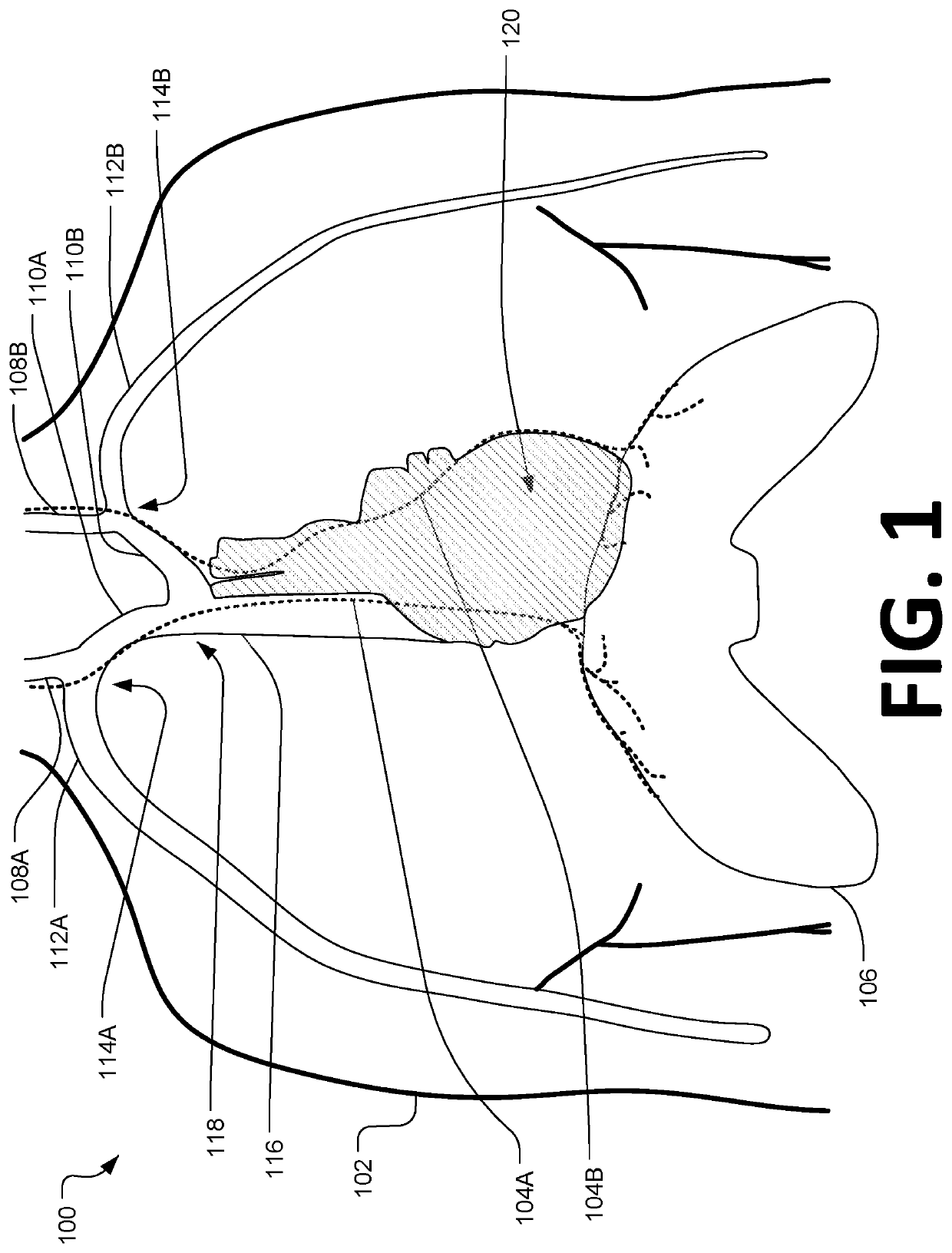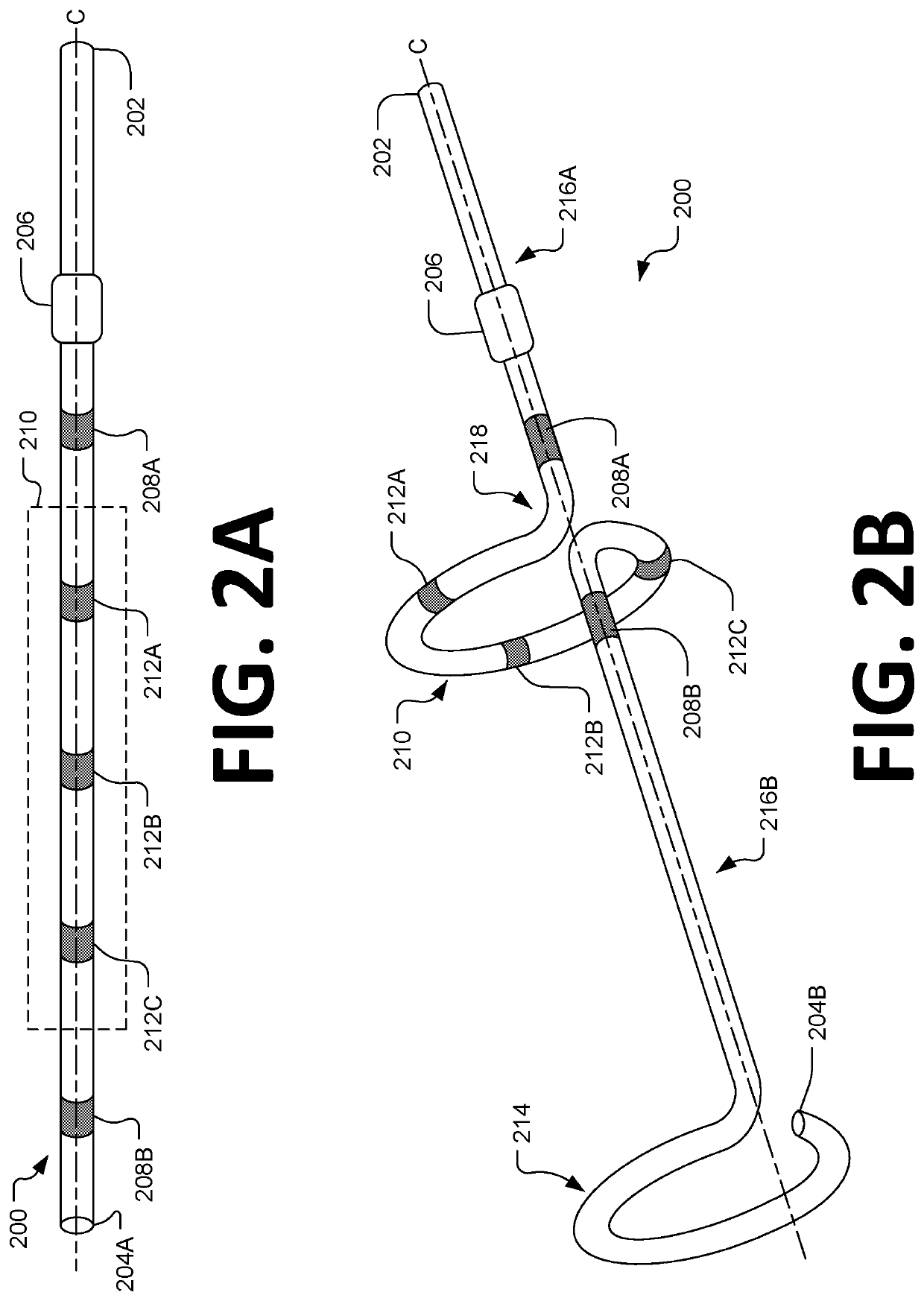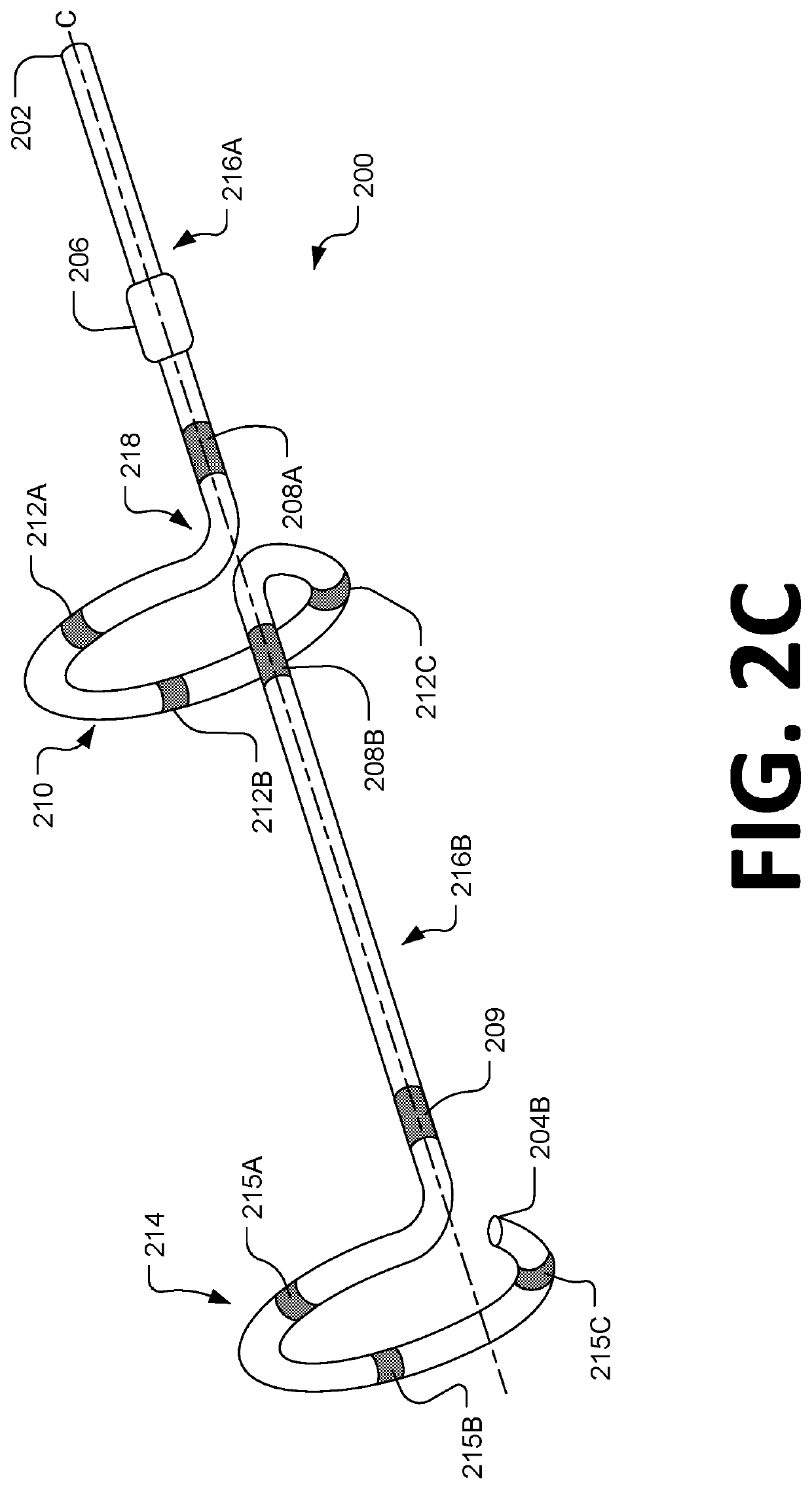Intravenous phrenic nerve stimulation lead
a phrenic nerve and intravenous technology, applied in the direction of respirators, artificial respiration, therapy, etc., can solve the problems of long hospital stay, non-physiological positive pressure ventilation, and force air into the lungs not the manner in which humans naturally breath
- Summary
- Abstract
- Description
- Claims
- Application Information
AI Technical Summary
Benefits of technology
Problems solved by technology
Method used
Image
Examples
Embodiment Construction
[0024]As discussed briefly above, medical ventilators are used to provide breathing gases to patients who are otherwise unable to breathe sufficiently. In modern medical facilities, pressurized air and oxygen sources are often available from wall outlets, tanks, or other sources of pressurized gases. Accordingly, ventilators may provide pressure regulating valves (or regulators) connected to centralized sources of pressurized air and pressurized oxygen. The regulating valves function to regulate flow so that respiratory gases having a desired concentration are supplied to the patient at desired pressures and flow rates.
[0025]Approximately one third of patients in the intensive care unit depend on mechanical ventilation. With millions of people each year admitted to the intensive care unit, many people per year rely on mechanical ventilation. Additionally, respiratory illnesses such as COVID-19 increase the amount of individuals depending on mechanical ventilation. The amount of time...
PUM
 Login to View More
Login to View More Abstract
Description
Claims
Application Information
 Login to View More
Login to View More - R&D
- Intellectual Property
- Life Sciences
- Materials
- Tech Scout
- Unparalleled Data Quality
- Higher Quality Content
- 60% Fewer Hallucinations
Browse by: Latest US Patents, China's latest patents, Technical Efficacy Thesaurus, Application Domain, Technology Topic, Popular Technical Reports.
© 2025 PatSnap. All rights reserved.Legal|Privacy policy|Modern Slavery Act Transparency Statement|Sitemap|About US| Contact US: help@patsnap.com



